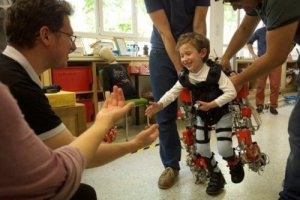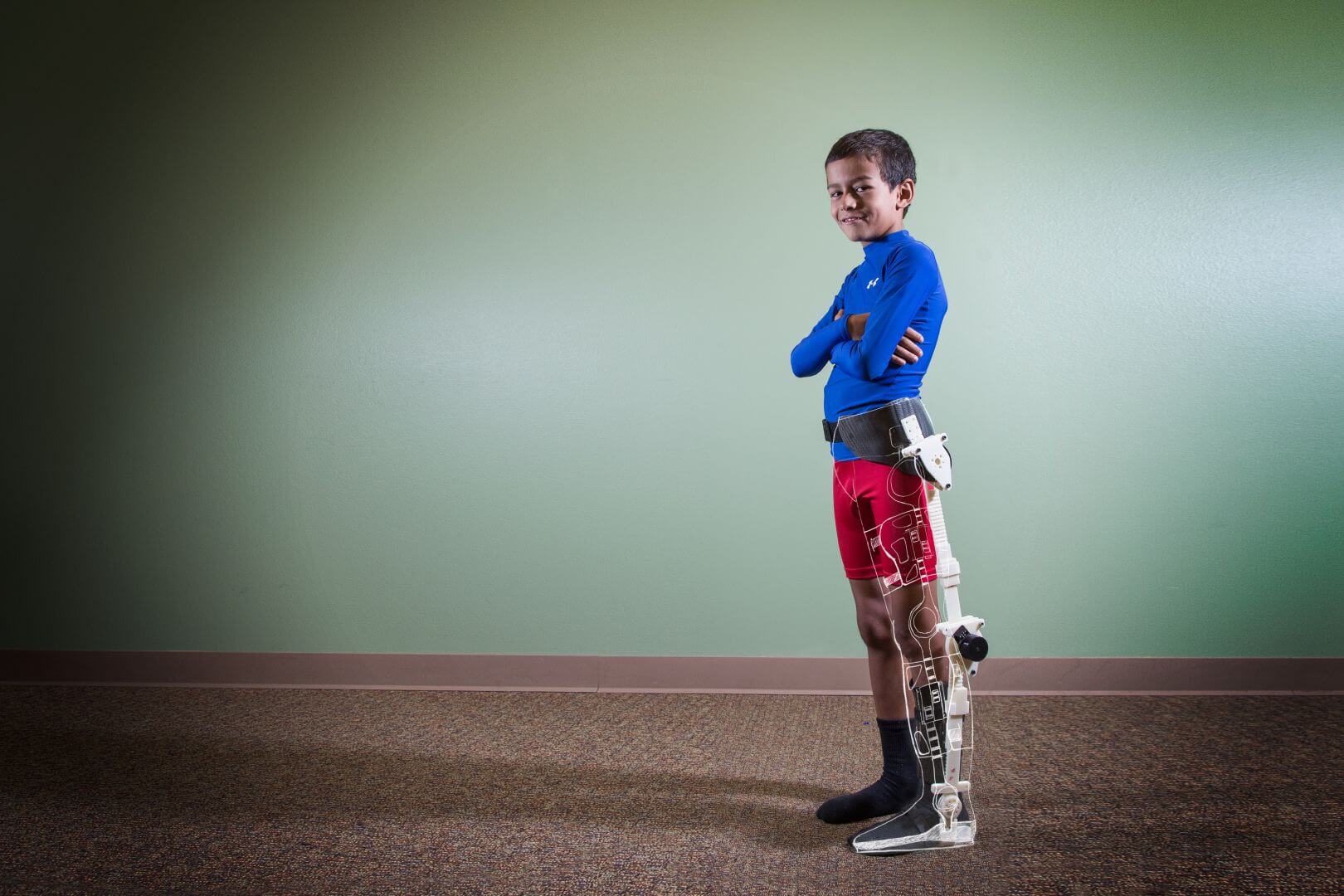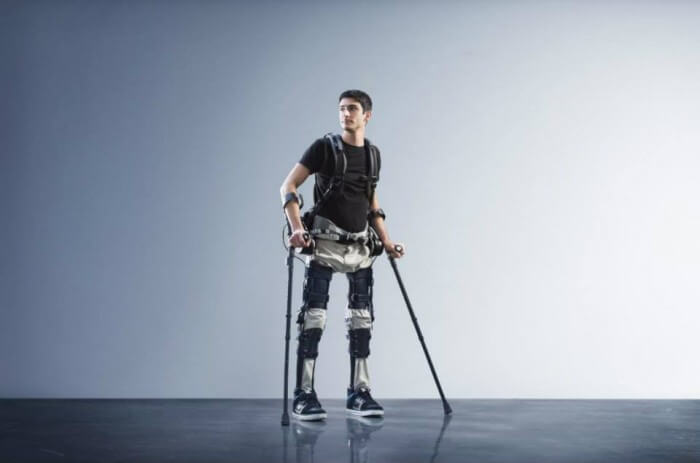This Exoskeleton Could Help Paraplegic Children Walk Again


Written and verified by psychologist Valeria Sabater
There are many scientists who are taking risks to prove that no one will need to use wheelchairs in a couple of years.
We’re not talking about scientific advancements or new discoveries regarding spinal reconstruction. Instead, we’re talking about neuroscience and robotics, which work together to produce devices like this exoskeleton.
In the future, those who work in the fields of technology and engineering will join their worlds by looking for a solution for physically disabled people. By connecting sensors and cables to our bodies, they will be able to restore lost or damaged body functions.
This is a hopeful field of development, which needs a lot of investment and commitment from institutions.
One of the most hopeful projects is, without a doubt, exoskeletons. These may allow paraplegic children to walk again. It’s an equally moving and complex topic that we want to share with you.
An exoskeleton for paraplegic children: something more than movement
This mechanical exoskeleton is the product of a type of engineering that has been studied and developed in various fields for some time. For instance, it has been studied in both the military and the medical fields, especially in the area of rehabilitation.
Furthermore, it uses various biometric sensors, batteries and hydraulic motors.
At first glance, it seems flashy and even heavy. However, the idea is to obtain the most ergonomic equipment possible. This is so that the exoskeleton can improve the life of people with reduced mobility and also give them freedom.
Paraplegic children: the patients most in need of this technology

One well-known exoskeleton is the 2005 model HAL-5, which aims to help elderly or disabled people walk.
The unit has a long battery life, doesn’t weigh a lot, and has a nice design.
Despite the existence of exoskeleton’s for older people, the first exoskeleton in the world for children was presented in June of 2016. It’s still in the experimental stages, but the Spanish National Research Council (CSIC) say that this exoskeleton is only the beginning of their plans for the future in regards to this technology.
It’s vital to offer this type of device to paraplegic children who are between the ages of three and fourteen and suffer from spinal problems.
The directors of this robotic project explain that these exoskeletons will soon be appearing in hospitals, serving as a form of muscle training therapy. This will help children with spinal cord muscular atrophy maintain their mobility.
Why do paraplegic children need an exoskeleton?
Intense rehabilitation
Rehabilitation by using an exoskeleton is vital when it comes to young children. This is because their neuroplasticity and their ability to regain part of their mobility are, without a doubt, more hopeful than in cases with adults.
Muscular atrophy
The exoskeleton is especially necessary in cases of muscular atrophy. This is a type of disease that is diagnosed in children aged 7 to 18 months.
Therefore, these children haven’t even taken a single step in their life. Furthermore, their physical and muscular deterioration is often progressive.
Hope
Offering the exoskeleton to these patients with muscular atrophy is a glimmer of hope for the children and their families.
Better life
This device will allow children to have the opportunity to have a better life. Moreover, they won’t only benefit from better mobility, but will also have better physical health and a low probability of their state getting worse.
What does an exoskeleton do?
For paraplegic children, exoskeletons are like Iron Man’s armor. It’s something amazing that allows them to stand up and do something that many of them have never done: walk.
It works using a system that stimulates the spine. This system uses sensors, which tap into our neuronal response, no matter how weak it is, to start the exoskeleton.
Difficulties with exoskeletons
Every child’s case is different
The difficulty is that each child has a different type of muscular atrophy or spinal cord problem. The only way to offer the best treatment for a child is to construct a personalized exoskeleton for each patient.
They are expensive
Furthermore, exoskeletons are expensive as well as complex. Therefore, despite inspiring hope in children and their families, exoskeletons are still not affordable for most people.
There are only some models in certain hospitals. However, the project directors of exoskeletons say that the only way for children to have one right now is for their family to rent one. Unfortunately, this would cost them 800 euros (around 855 dollars) a month.

This is a very high figure for the majority of families. Therefore, acquiring an exoskeleton for their child is a distant dream. Sadly, this brings more sadness than joy into these family’s lives.
Discover: 8 Ways to Eat Healthy on a Tight Budget
In conclusion
Moreover, these children need to use and benefit from this technology now, because each month that passes is lost time for rehabilitation. Waiting also reduces the child’s chance for an improvement of their quality of life.
All that can be done is hope that governments invest in this type of project because something as basic and wonderful as walking should be accessible to everyone.
All cited sources were thoroughly reviewed by our team to ensure their quality, reliability, currency, and validity. The bibliography of this article was considered reliable and of academic or scientific accuracy.
- Consejo Superior de Investigaciones Científicas. Un nuevo exoesqueleto del CSIC ayuda a caminar a niños con parálisis cerebral. (2019). https://www.csic.es/es/actualidad-del-csic/un-nuevo-exoesqueleto-del-csic-ayuda-caminar-ninos-con-paralisis-cerebral
This text is provided for informational purposes only and does not replace consultation with a professional. If in doubt, consult your specialist.








